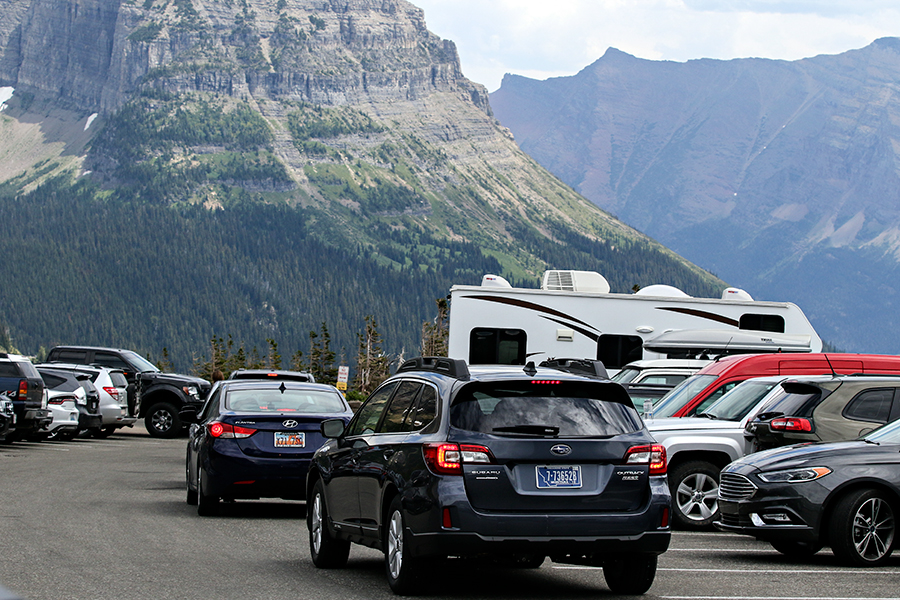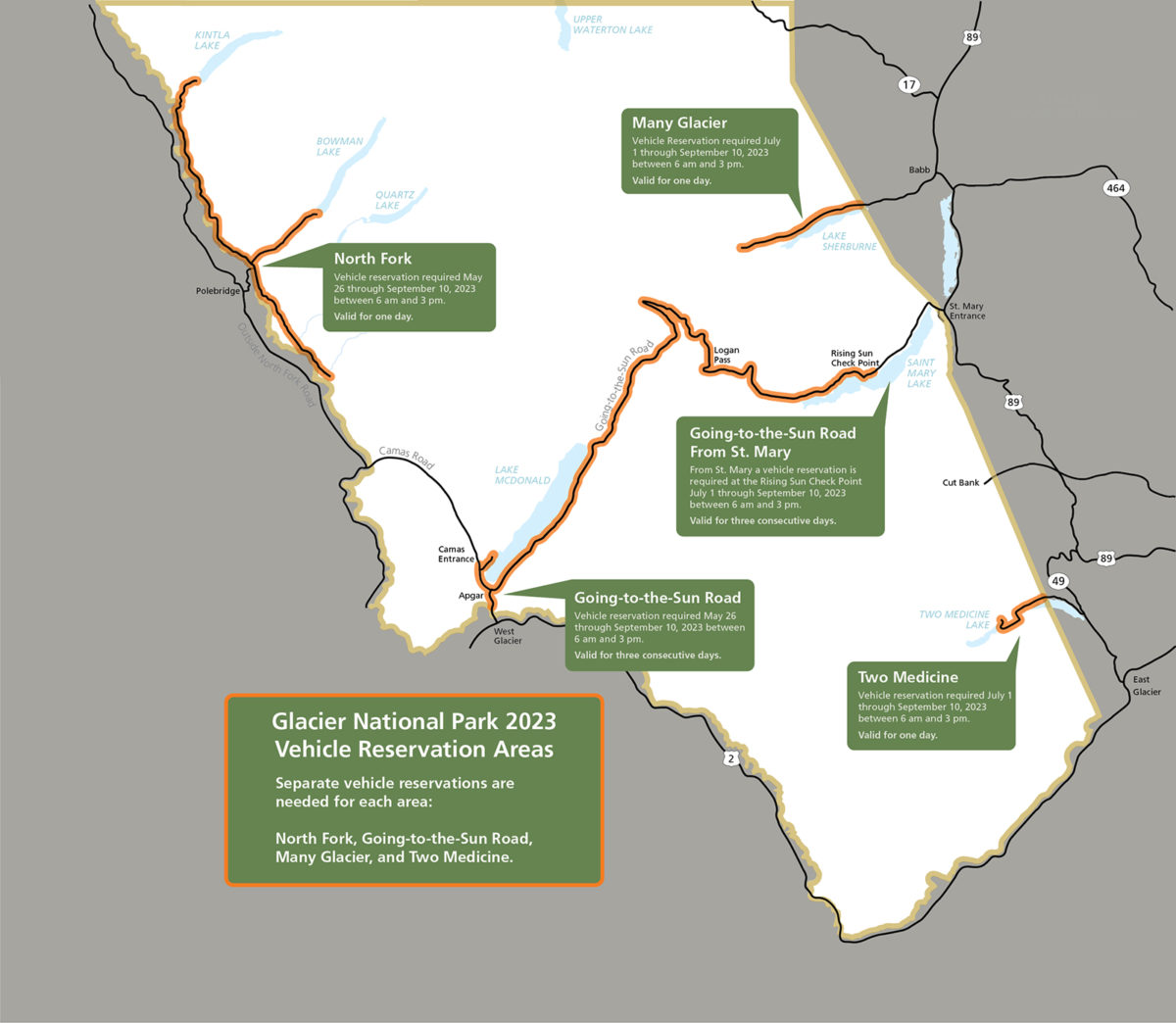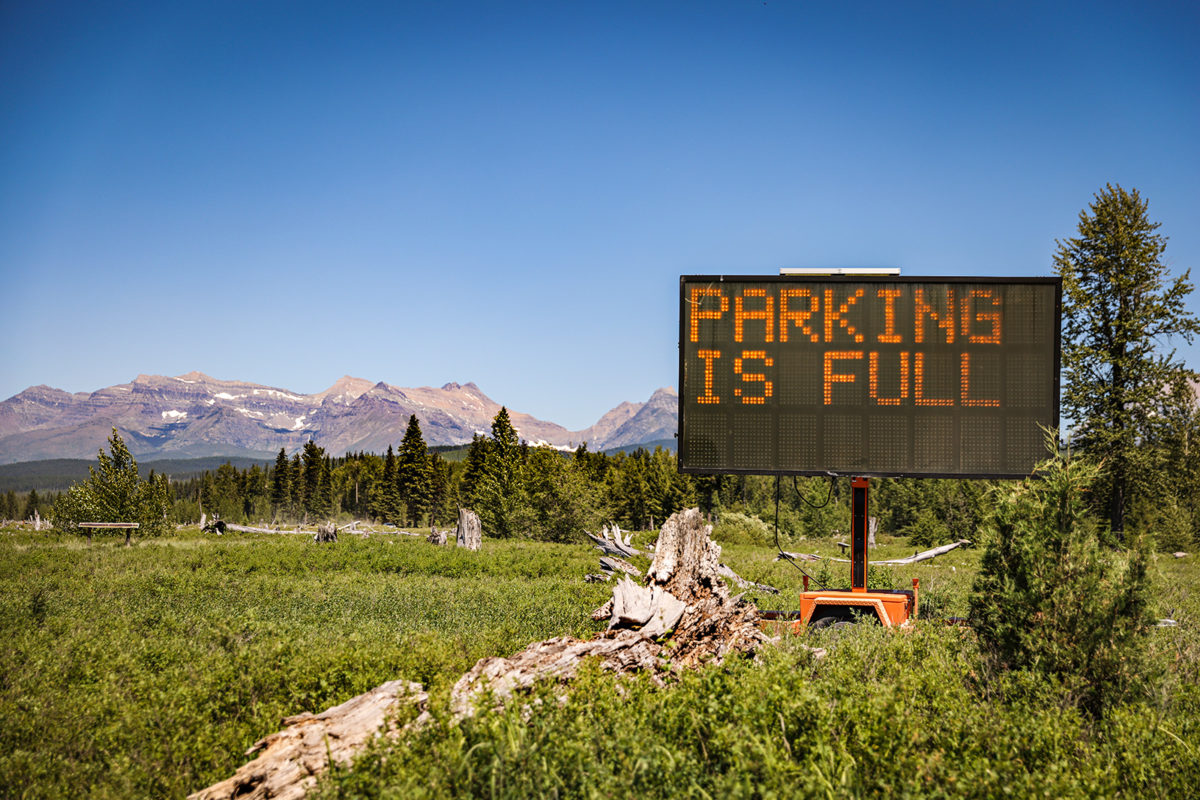Glacier Park’s Advanced Reservations Continue to Sell Out Fast Ahead of Summer
As prospective visitors complain of being "locked out," park officials acknowledge the first-come, first-served system isn’t perfect; but they say it has helped manage high traffic volumes and protect natural resources
By Tristan Scott
On March 1, prospective summertime visitors to Glacier National Park queued up online to secure advanced vehicle reservations to access the Going-to-the-Sun Road in July, as well as the park’s North Fork, Many Glacier and Two Medicine areas.
Even though the visitors were planning four months in advance, the available vehicle reservations for Going-to-the-Sun Road were sold out within 30 minutes. Vehicle reservations for all other areas were distributed within 10 minutes of their release.
“As expected, demand for vehicle reservations for the month of July was high because it is for peak season,” according to Glacier Park Public Affairs Assistant Brandy Burke.
The early rush on tickets marked the second phase of this year’s advanced vehicle reservation system, a pilot program entering its third year. Despite the rapid rate of depletion to the park’s inventory of available reservations, Burke said the managed access system has demonstrated a record of success at curbing overcrowding and safeguarding natural resources in the Crown Jewel over the past two summers.
“The goal of the vehicle reservation system is to manage high traffic volumes within the park to protect natural and cultural resources while delivering quality visitor experiences,” Burke said. “The past two years of the pilot program have been successful in spreading visitation throughout the day during peak hours on Going-to-the-Sun Road so that there are fewer closures, better traffic management, and a more enjoyable park experience.”
In 2022, Glacier National Park was among the top-10 most visited national parks, a perennial statistic that has solidified the park’s ranking as one of the nation’s most attractive. Last year, an estimated 2,922,293 people visited Glacier, which is down 5.6% compared to 2021. During the park’s first year of managed access, 3,089,642 people visited Glacier Park.

Still, the system’s expansion has faced pushback from members of the public, with visitors lamenting the restricted access to public land and its implications for the local economy. This year, those frustrations surged after Glacier National Park officials announced a buildout to the vehicle reservation policy, requiring advanced reservations to access the park’s east-side entrances at Two Medicine and Many Glacier in addition to the Going-to-the-Sun Road and North Fork entry points, where a similar managed-access program existed in 2022.
The new iteration of the system involves a phased release of tickets into the reservation pipeline, with blocks of vehicle passes slated for rollout on the first of each month, starting in February, for entry to certain park entrances four months later. For example, the batch of tickets released on March 1 are valid for all reservation areas from July 1 through July 31. On April 1, reservations will become available for all areas for Aug. 1 through Aug. 31, and on May 1 reservations for all entry points will be released for September.
During the March 1 release, roughly 50% of four-month advanced vehicle reservations for the Going-to-the-Sun Road corridor as well as about 30% of four-month advanced vehicle reservations for the North Fork, Many Glacier and Two Medicine areas were released. The remaining reservations will be released on a rolling basis 24 hours in advance of the entry day, starting at 8 a.m. Mountain Time, allowing visitors, and especially locals, to visit the park without needing four months of foresight.
“While we acknowledge the system is not perfect, we are hearing from visitors that their experience in the park has been improved,” Burke said. “We continue to fine tune the system to deliver quality visitor experiences while protecting park resources.”
In addition to the breakneck pace at which the reservations sell out, much of the recent criticism has centered on the heavy volume of online traffic to recreation.gov, the third-party online portal visitors must use to procure their vehicle reservations, which has caused confusion and frustration for some visitors.
U.S. House Rep. Ryan Zinke, R-Montana, who served as Interior Secretary during the Trump Administration before resigning amid ethics investigations, complained on Twitter that the system’s reliance on recreation.gov “is a total scam.” As an example, Zinke posted a screenshot of the website’s booking calendar showing available tickets, and another screenshot of the same date selection along with a prompt explaining there are “no available times.”
“This is what happens when you try to buy a reservation for @GlacierNPS. The system shows tickets available on the date. When you click, there’s none available,” Zinke tweeted. “The entire reservation system is a deliberate strategy to keep the public out of parks and this website is a total scam.”
Park officials acknowledged the reservation system can at times falter, but they attributed much of the frustrating user experiences on recreation.gov to multiple people trying to book the same day at the same time.
“The system truly is first come, first served,” Burke said. “The reality is if someone clicks on it before you, they could have it in their cart first, which removes it from available inventory and then when someone else clicks it, there’s nothing.”
Another common criticism has focused on how the reservation policy restricts the ability of locals to access Glacier Park, particularly those accustomed to making spontaneous forays into the Glacier’s interior without laying plans months in advance. A recent petition on the website change.org has garnered more than 4,000 signatures in support of a policy to “exonerate state residents from Glacier National Park’s broken vehicle reservation system.” The petition submits that a “proximity clause” should afford Montana residents access to Glacier’s restricted entry points without a vehicle reservation.
“While we recognize the severity of GNP’s mounting visitation crisis and support meaningful solutions to address this issue, the new ticketed vehicle reservation system in Glacier National Park isn’t working for the very people that keep the Park and Montana’s economy functioning,” the petition states. “Please let us into our park!”
According to Burke, visitors both within Montana and from across the country have successfully obtained vehicle reservations. Approximately 53% of advance May and June reservations and 33% of July reservations were obtained by Montanans, she said, “making Montana the state with the highest percentage of reservations booked for both releases.”
Glacier Park officials also say they have worked diligently during the off-season to address visitors’ concerns by tweaking the evolving managed-access system, including adjusting the hours and dates within which reservations are required.
“Through the pilot process, the park is engaged in continued learning about the various strategies used. The park has also engaged with stakeholders and local communities to inform the design of the pilot each year,” Burke said. “This information will help inform long-range visitor use management planning, which the park is expecting to begin in 2023. Through the long-range planning process, there will be opportunities for public input once the planning process is initiated.”

One concession Burke said was designed to accommodate local visitors was the decision not to require reservations at east side entrances (St. Mary, Two Medicine, Many Glacier) until July 1. The Going-to-the-Sun Road park shuttle is also accessible without a vehicle reservation at the St. Mary Visitor Center and is free, she said. The shuttle stops at several points along Going-to-the-Sun Road.
Although vehicle reservations are required to access the Sun Road from the St. Mary entrance from 6 a.m. to 3 p.m., visitors can travel as far as the Rising Sun checkpoint without a pass.
The most significant change from the previous two summers is a requirement that park visitors obtain a vehicle reservation to access the Two Medicine and Many Glacier entrances from July 1 through Sept. 10 between the hours of 6 a.m. and 3 p.m. Reservations for Two Medicine and Many Glacier valleys will be valid for one day.
For the popular western entrances to Going-to-the-Sun Road at West Glacier and Camas, and to access the park’s North Fork area at the Polebridge Ranger Station, reservations will be required from May 26 through Sept. 10.
For the Going-to-the-Sun Road, vehicle reservations are valid for three days and are required from 6 a.m. to 3 p.m., ending an hour earlier than in 2022. In Polebridge, reservations are only valid for one day and are required from 6 a.m. to 3 p.m.